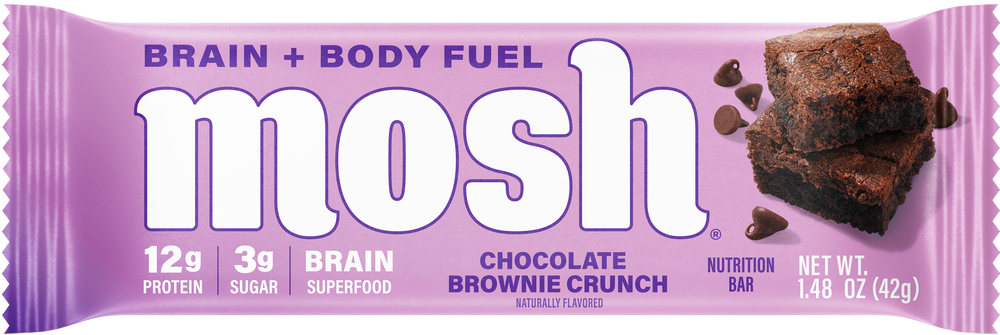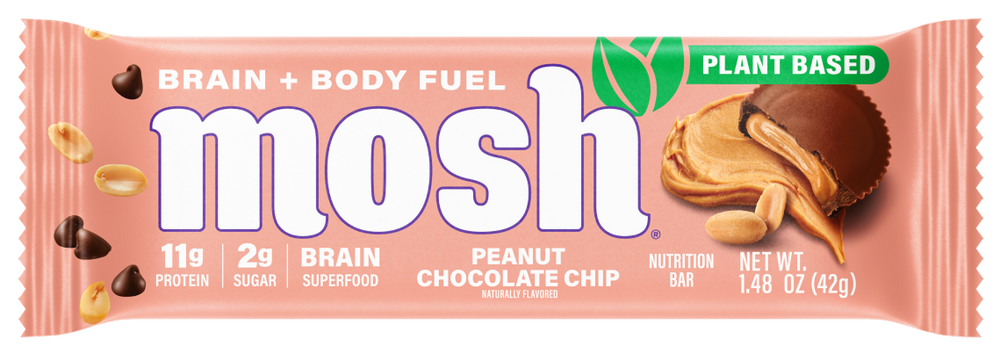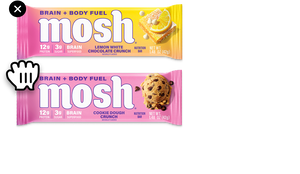It’s safe to say that everyone knows eating healthy foods comes with many benefits. Eating a balanced and healthy diet promotes brain health and reduces the risk of developing serious medical conditions such as diabetes, heart disease, or cancer.
The difficult part about eating a balanced diet is that it can require a concentrated effort on your part. You may need to say goodbye to the world of fast foods and say hello to the world of whole foods. It also means you may need to start preparing meals more often.
This can be difficult if you don’t know how to cook. It’s estimated that roughly 28 percent of American adults don’t know how to cook. If you’re one of these individuals, you don’t have to give up your dreams of eating healthy.
You’ll just have to work a bit harder to achieve your goal. Luckily, plenty of simple meals are healthy for you and require little to no cooking skills. Let’s take a look at some options.
How Can You Build a Balanced Meal Without Cooking?
The concept of a modern supermarket sounded unfathomable to people just a few hundred years ago. A single place that featured tens of thousands of different food options, and you had your choice of them all?
The dreams of our ancestors eventually became a reality in 1916 when the world’s first supermarket opened in Memphis, Tennessee. Since then, supermarkets have expanded all over the nation and the planet. A little over 100 years after the first supermarket opened, 115,526 food stores sold over $717 billion of retail food and nonfood products in the United States.
Supermarkets have made it much easier for people to access food. Unfortunately, a lot of the food sold in the highest quantities isn’t particularly nutritious. American supermarkets’ most commonly sold items include potato chips, cookies, soda, candy, and salty snacks. If you’re trying to eat healthily, replacing these foods with other options is a good idea.
The tricky thing will be replacing them with foods that don’t involve cooking. You might have to search a little harder than usual at your local supermarket, but here is how you can build a balanced meal without having to cook a thing:
Picking Protein
Ideally, you will want to have some protein at every meal. The body breaks down protein into amino acids used to produce and repair cells, muscles, bones, skin, and cartilage. Many of the best protein sources must be cooked before safe consumption.
Fortunately, there are several protein options that you can find that come pre-cooked, including:
-
Rotisserie chicken. Most supermarkets include delis with several rotisserie chickens slowly cooked on a spit roast. With one rotisserie chicken, you can have enough meat for several meals.
-
Canned fish. Fish is one of the planet's best sources of omega-3 fatty acids and is strongly associated with positive brain health. You can find various canned fish options at your local supermarket, including tuna, sardines, and salmon.
-
Canned beans. Beans and other legumes are excellent sources of protein that can be used as a meat substitute for people with dietary restrictions. They can easily be added to a variety of different meals or eaten on their own with a little bit of flavoring.
- Nut butter. Nuts are one of the best non-meat sources of protein in the natural world. Nut butter is an easy way to increase your protein intake without worrying about cooking. Peanut butter is the most popular nut butter, but you also have options like almond butter, pistachio butter, and walnut butter if you want variety.
Choosing Carbs
Carbohydrates tend to be the main source of energy in your diet. The body breaks down carbohydrates into glucose (commonly known as blood sugar), which fuels the body's cells, tissues, and organs.
The trick is trying to find healthy sources that you can use for building balanced meals, including:
-
Whole grain bread. People have been eating bread for hundreds of years, and it’s not going away anytime soon. The key thing is to be mindful of your choice of bread. Look for whole-grain options and try to avoid bread with a lot of added sugar.
-
Tortilla wraps. The ingredients for tortilla wraps are virtually identical to bread. The key difference is that tortillas are unleavened, meaning no yeast is added. Many people use tortilla wraps as a substitute for bread to reduce their calories.
- Frozen rice. Rice is another excellent carb that pairs well with many different meals. You can likely find some pre-cooked rice in the frozen foods section of your supermarket. Microwave the frozen rice to thaw it out, and you can add it to your meal. (Conversely, a basic rice cooker usually isn’t more than $20, and it’s easy enough to buy “raw” rice, rinse a cup or two at a time, then pop it into the rice cooker to cook!)
Deciding on Dairy
The primary benefit of consuming dairy products is that they’re very high in calcium. The body uses calcium to build and maintain the structure of your bones and teeth. Dairy can also be a good source of protein, various B vitamins, and vitamin D.
Here are some dairy options that do not require cooking:
-
Cheese. You don’t have to worry about cooking cheese, but looking out for its saturated fat and sodium content is a good idea. A little bit of cheese can go a long way toward improving the taste of your meal. Too much cheese can put you at risk for high blood pressure and heart issues.
- Greek yogurt. The probiotics in yogurt make it an extremely friendly food for your gut biome. Adding yogurt to your diet can help your body maintain a healthy ecosystem of bacteria and microorganisms essential to digestion. Opting for Greek yogurt is a good idea, as it typically has much less sugar than flavored or regular yogurt.
Pairing a Produce
The last part of the puzzle includes the produce section. Here is where you can find many fresh fruits and veggies, offering essential vitamins, minerals, and fiber. An excellent feature of eating produce is that you don’t have to worry about cooking it before you devour it.
Let’s dive into options for fresh, frozen, or canned fruits and vegetables.
-
Fresh. You can pick whatever options that you want here as there are no wrong answers. It can be smart to factor in how quickly you can eat these fresh items, as they can go bad quicker than frozen or canned options.
-
Frozen. It can be easier to opt for frozen versions as they stay fresh for longer. If you plan on eating a lot of fruits and vegetables over a longer period, it might be best to go for the frozen variety and thaw as needed.
- Canned. Canned options are the middle ground between fresh and frozen. You do want to be careful when using canned produce as it tends to have more sugar and sodium — fruits already have enough natural sugar.
What Dishes Can You Make Without Cooking?
Once you have the ingredients, it’s just a matter of assembling them in the way that you want.
Using some of the options listed above will give you many options for different and simple dishes, including:
-
Soups. While making soup could be seen as cooking, it’s closer to just warming up the ingredients. All you need is a pot and some low-sodium broth to get started. You can add whatever proteins and veggies you want to make a healthy soup. Pair it with some bread to bring out the flavor and give you some extra carbs.
-
Rice bowls. Thawing out pre-cooked frozen rice will leave you with a solid base for a rice bowl. You can add proteins, veggies, or hard-boiled eggs to round out the meal. Add some seasoning, and you can have a perfectly balanced and delicious meal in a few minutes. (You can also cook enough rice to last several meals, with that rice cooker we mentioned earlier!)
-
Salads. Making a salad is one of the easiest ways to create a highly nutritious meal. Start with a bowl of lettuce, spinach, or kale. Any proteins will work, and you could always toss in more veggies, like cucumbers, carrots, or tomatoes. Shredded cheese can give you some dairy, and you could top it off with a light coat of store-bought, nutritious salad dressing. Easy, delicious, and nutritious in a few simple steps.
-
Wraps. Making a sandwich can be an easy option that doesn’t require cooking. However, making a wrap might be the better option. You can include any of the traditional ingredients found in a sandwich or get really creative with a wrap. Wrapping hummus, veggies, and feta cheese can provide an exciting Mediterranean meal. Alternatively, you could combine the classics and make a ham, cheese, and lettuce wrap. The options are limitless when it comes to wraps.
- Smoothies. One of the easiest ways to get your supply of fruit and vegetables is to make a smoothie. You only need a liquid base (milk, coffee, ice, juice, or water) to get started. Then you can add all the fruits and vegetables you like best. Adding a little bit of nut butter or protein powder can give you some extra flavoring and a boost of essential protein. It only takes a few seconds to blend a variety of nutritious foods so feel free to use your imagination.
You Don’t Have To Cook To Eat Healthily
Diet can be one of the most important influencers on your health, not just in your body but in your brain too. Improving your diet is one of the best things you can do for yourself. While it might seem challenging (especially if you’re not a very good cook), it’s definitely something that you can accomplish with a little effort.
Combining healthy carbs, frozen or fresh fruit and vegetables, and probiotic-rich dairy can be all you need to create a balanced and healthy meal. The list above is just a few ideas to get you started. With a little bit of imagination, you could build off of them and create your own recipes.
You now have everything that you need to make the initial change to a healthier lifestyle. All that's left is taking that first step by entering your supermarket and buying your list of proteins, carbs, dairy products, and produce.
For more tips like this on how to be the best you, explore the rest of the MOSH blog here!
Sources:
Dairy | The Nutrition Source | Harvard T.H. Chan School of Public Health
Carbohydrates as a source of energy | NCBI Bookshelf
On This Day in 1916: First ‘Supermarket’ Opened in the United States | News 18
28% of Americans Cant Cook | Tufts Health & Nutrition Letter
Healthy Eating Plate | The Nutrition Source | Harvard T.H. Chan School of Public Health
{Note Down} List of Top 100 Quick Selling Grocery Items | Free business ideas


























